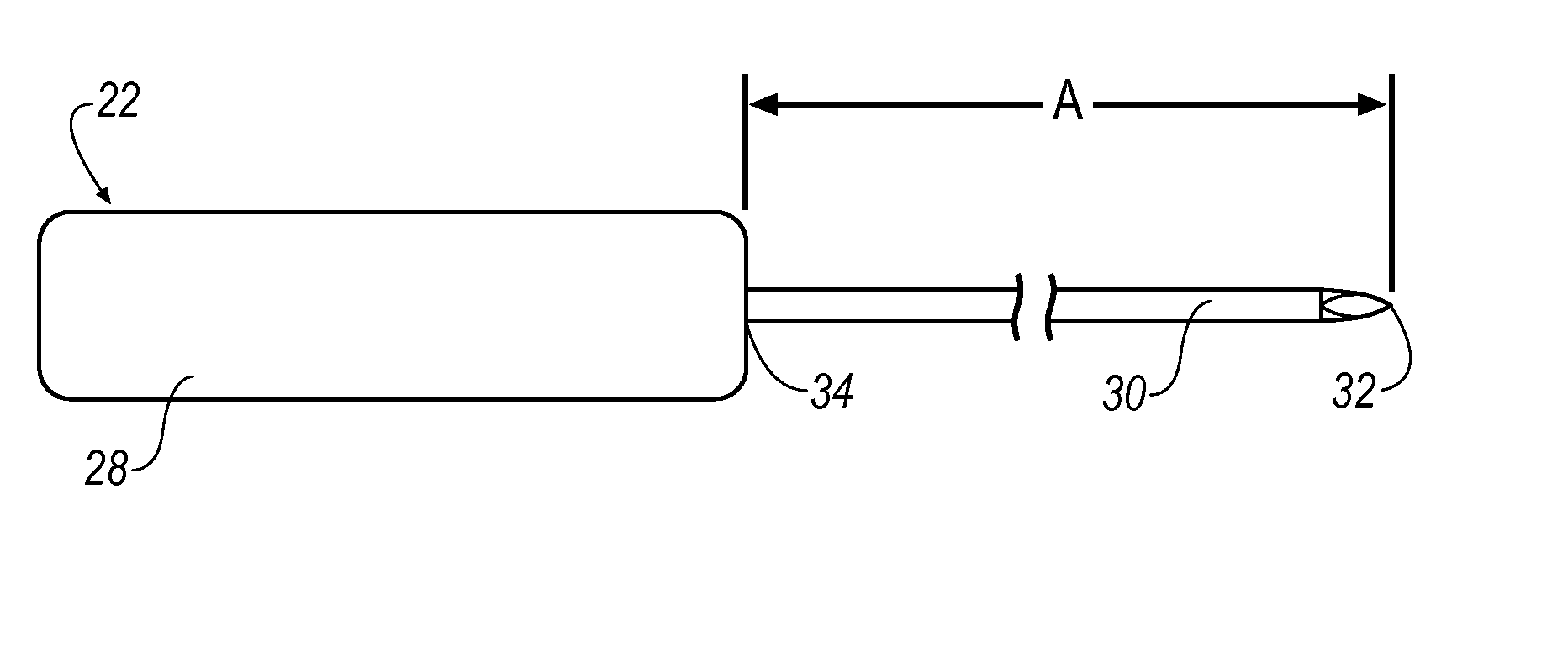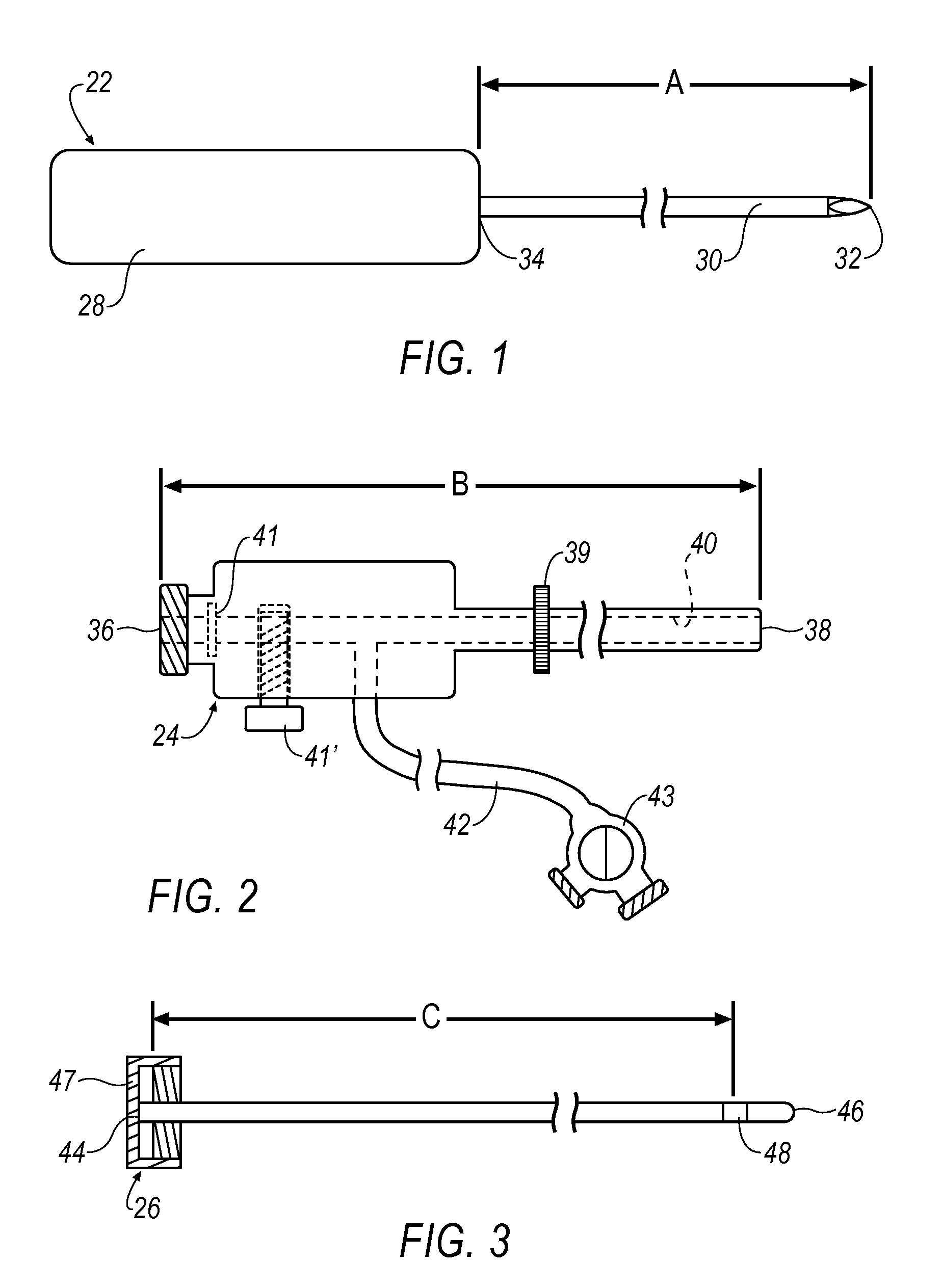System and method for minimally invasive disease therapy
a disease therapy and minimally invasive technology, applied in the field of surgical system and method for removing and treating diseased tissue, can solve the problems of frequent visits, undesirable side effects, and cancerous cells remaining near the resection si
- Summary
- Abstract
- Description
- Claims
- Application Information
AI Technical Summary
Problems solved by technology
Method used
Image
Examples
embodiment 400
[0096]FIG. 22 shows a haemostatic agent embodiment 400 that introduces a haemostatic agent (represented by arrow(s) H) to target site 182 through valve 43 and fluid conduit 43. A syringe 401 (or other suitable applicator) is attached via a connecting tube 402 to fluid conduit 42. Haemostatic agent H is transported along a lumen 404 formed between outer cannula 56 and inner lumen 40 of outer cannula 24. Check valve 41 functions to prevent haemostatic agent H from exiting outer cannula 24 at proximal end 36. Haemostatic agent H is then deployed at 406 to target site 182 topically, e.g., haemostatic agent H is applied to a surface of target site 182. Once haemostatic agent H is deployed at 406, a haemostatic region 408 is formed that reduces, or in some cases, prevents bleeding into target site 182. Alternatively, haemostatic agent H may be introduced to target site 182 through an introducer, a side port, through a lumen, or through a resection device or treatment device itself.
[0097] ...
embodiment 420
[0100]FIG. 23 shows an alternative haemostatic agent embodiment 420 introducing a haemostatic agent H to target site 182 through proximal end 36 and valve 41. In this embodiment, handpiece 54 is removed from outer cannula 24 and thus, inner lumen 40 is unrestricted (See FIG. 2). Here, syringe 401 is inserted through proximal end 36 and valve 41 such that haemostatic agent H is deployed directly down inner lumen 40 along path 424 (See also FIG. 2). When reaching distal end 38 of outer cannula 24, haemostatic agent H is deployed at 426 to target site 182. In so doing, haemostatic region 408 is formed on an inner wall of target site 182. Depending upon the type and / or form of haemostatic agent H used, selection of a haemostatic deployment embodiment may be selected. For example, a liquid haemostatic agent H may perform well using either the embodiment of FIG. 22 or FIG. 23. However, a dry haemostatic agent H (e.g., a powder) may have improved deployment performance using the embodiment...
PUM
 Login to View More
Login to View More Abstract
Description
Claims
Application Information
 Login to View More
Login to View More - R&D
- Intellectual Property
- Life Sciences
- Materials
- Tech Scout
- Unparalleled Data Quality
- Higher Quality Content
- 60% Fewer Hallucinations
Browse by: Latest US Patents, China's latest patents, Technical Efficacy Thesaurus, Application Domain, Technology Topic, Popular Technical Reports.
© 2025 PatSnap. All rights reserved.Legal|Privacy policy|Modern Slavery Act Transparency Statement|Sitemap|About US| Contact US: help@patsnap.com



